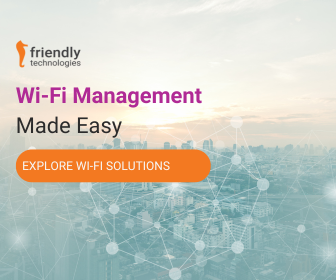What is IoT?
Understanding IoT Device Management and Standards
“IoT” is a broad and somewhat unspecific term, and everyone seems to have a different notion of what it is. This paper’s purpose is to put some basic IoT and Device Management concepts and terms in order. The paper also discusses what technologies are available in the world of IoT and defines when each protocol should be used, providing an overview of the advantages and disadvantages of each one from the perspective of Device Management and IoT.
After reading this paper, you should have a deeper understanding of what IoT is, have greater familiarity with standard IoT protocols and clients, and be able to choose the appropriate type of client for specific IoT scenarios. This paper should provide an added value to the following types of companies: device manufacturers (OEMs), carriers, CSPs, IoT companies and system integrators, and IoT platform providers
The topics covered in this paper are:
- Standard protocols – LwM2M, MQTT, OMA-DM, and TR-369 USP.
- When to use which protocol.
- The process of deploying embedded clients on the devices
- How to manage constrained devices.
- How to manage large-scale deployments of IoT devices
- Managing Data collection and Analytics
- Friendly’s One-IoT™ Management platform and embedded clients.
The paper was published due to a high demand resulting from the webinar series “Understanding IoT” that Friendly recently ran.
When people talk about Internet of THINGS, they may be referring to a variety of different concepts. Taking a closer look, we can find that in fact, most IoT architectures fall under one of the following three categories:
Big Things: Regardless of their physical size, this category refers to the more complex devices. For example, modems, routers or industrial machines, all of which share the fact that they are generally not restricted by their power supply, are connected directly to Internet with no bandwidth constraints, and most importantly have a data model that is complex, with thousands of parameters that need to be managed.
Small Things: The new category of “smart” things – simpler devices that are directly connected to the Internet – such as sensors, smart locks, smart lights, etc. Items in this category typically have a relatively limited memory and are often powered by a battery which means they also have power restrictions. In addition, they are often connected to the Internet over a SIM card and the bandwidth is either expensive or limited. These kinds of devices generally have a much simpler data model, and their functionality is often concerned mostly with the “Set” and “Get” commands. An example of a “Small Thing” is a smart light bulb, which can be turned ON or OFF, maybe dimmed or change its color, and in more sophisticated devices even report its power consumption – however, all these functionalities amount to less than 10 parameters to be controlled.
Small Things Connected to the Internet via a Gateway: This category is probably going to dominate the IoT world in the not-so-distant future. One can already see it happening today. These kinds of items and devices are referred to as IoT devices, but are not really IoT because they do not have the “I” part in them; they are not Internet-connected. This includes devices that communicate over protocols like ZigBee, Z-Wave, LoRa, Sigfox, and BLE. While these protocols are generally considered to be IoT protocols, they do not actually work over an Internet connection. Making these into Internet-capable devices requires the use of a gateway in the middle.
Explore Other Topics
Friendly News
Telecom Blog
IoT Blog
Embedded Blog
Smart Home Blog
Webinars
Whitepapers
Download the Whitepaper

Friendly IoT Device Management
One-IoT™ Device Management
IoT Application Enablement
Friendly Smart Home
Embedded Clients
Friendly LwM2M client
Friendly OMA-DM Client
Friendly Partners
Commercial Partners
Device Manufacturers
Resources
Blog & News
Glossary
Webinars
About Friendly Technologies
